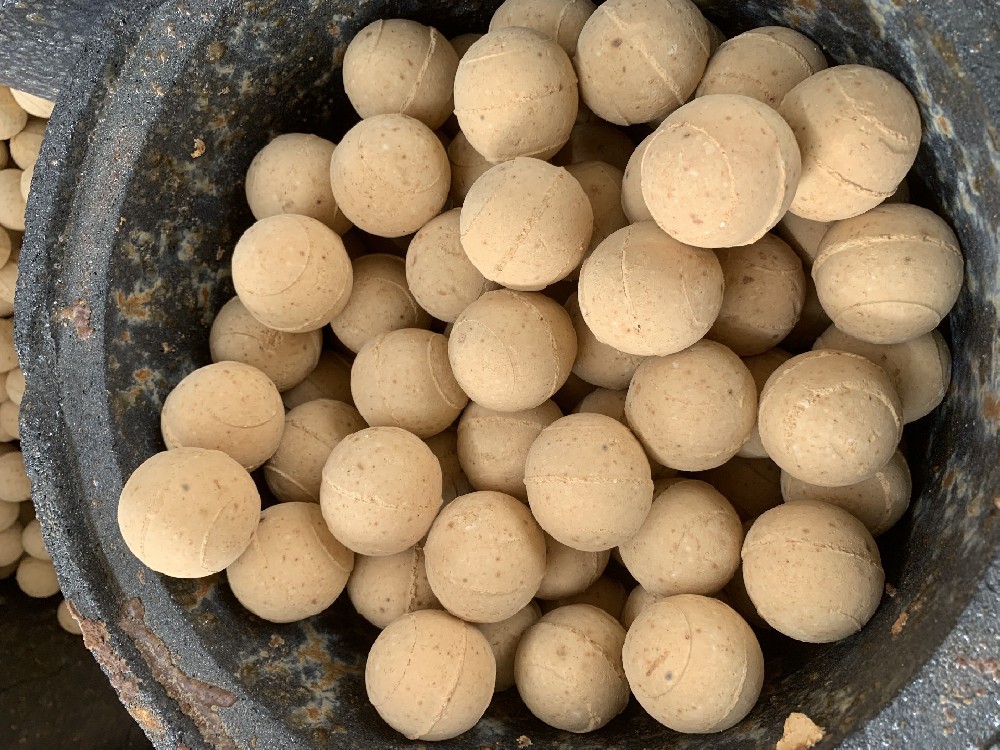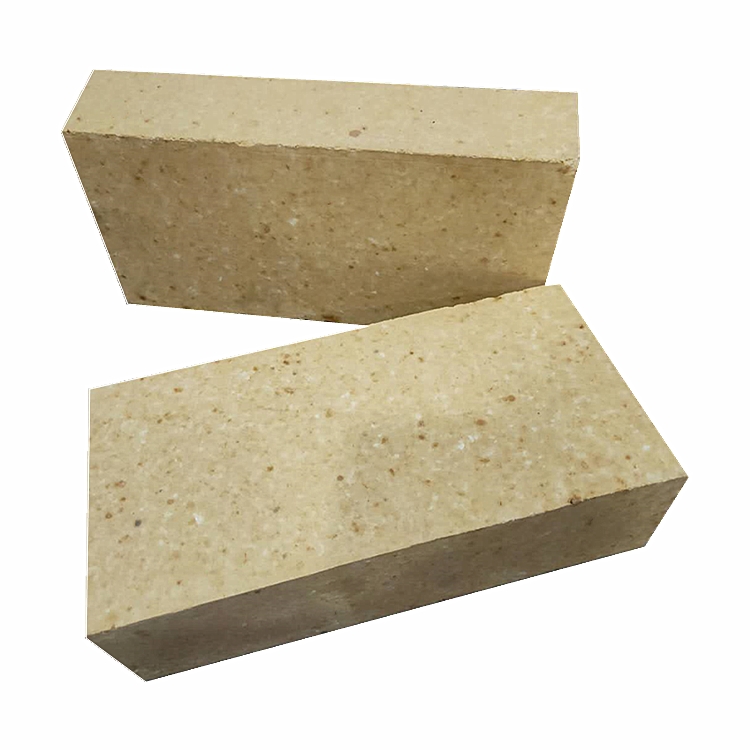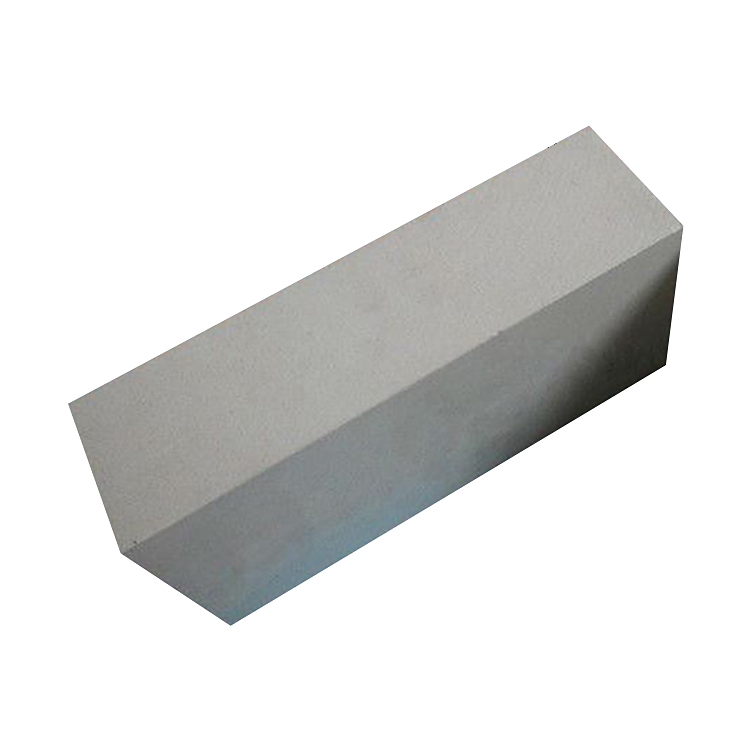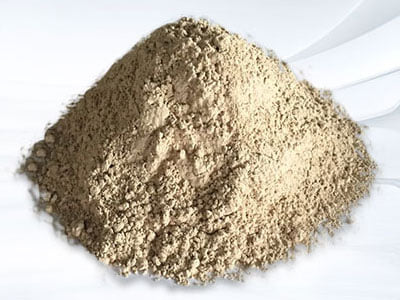Application of Silicon Carbide Mullite Bricks
2021-04-19 07:46:50
Silicon Mo brick, a kind of refractory brick, has the homonym of "wear-resistant brick". It was successfully trial produced in the early 1990s. It was once called HMS high wear-resistant brick, and its wear-resistance coefficient is more than five times higher than phosphate bonded high aluminum brick. In terms of phase composition, it should be silicon carbide mullite products, referred to as silicon mullite brick. This title is mostly popular in the building materials industry, other industries are generally called high aluminum silicon carbide brick, aluminum oxide silicon carbide brick.
The production of silicon carbide mullite from silicon carbide and high alumina bauxite clinker is in line with the technological development of refractory brick products. Because silicon carbide is oxidized to produce silicon dioxide, which reacts with aluminum oxide to form mullite (3Al2O3 2SiO2), the density and strength of products can be improved, and a protective film is formed on the surface of products, which can prevent further oxidation of silicon carbide, so that silicon carbide can be protected in high alumina silicon carbide refractory brick Keep a certain content, improve the thermal shock stability, wear resistance, corrosion resistance of products. The service life of high-strength dense silica mullite brick in every section of cement rotary kiln shell except firing zone is 3 ~ 4 times longer than that of high alumina brick.
In recent years, the application of silica mullite refractory brick in cement rotary kiln has been developed rapidly, especially the appearance and large-scale of new dry process kiln. The rotary speed and thermal stress intensity of kiln have been greatly improved, which puts forward new and higher requirements for the material and physical and chemical properties of refractory materials. Therefore, in addition to the magnesia chrome brick being used in the firing zone of cement rotary kiln under the protection of the kiln skin, the effect of using silica mullite brick in the secondary firing zone, transition zone and cooling zone is obviously better than that of magnesia chrome brick.
At present, dozens of refractory enterprises in China produce this kind of product. Due to the convenient source of raw materials and the lax process requirements, the actual production capacity of each enterprise is very large. As long as it can produce clay brick or high alumina refractory brick, it can produce silica mullite brick. The supply of products exceeds the demand, and the market competition is fierce.
Secondly, silicon Mo brick has the characteristics of high temperature resistance, corrosion resistance and wear resistance. However, due to the differences in the technical level of various enterprises, the product quality is also different. How to produce high quality silicon mullite brick and improve the service life of refractories used in cement kiln are discussed here, which can provide reference for the production and use of silicon mullite brick.
With the development of technology, the quality of the products has been significantly improved, and the technical performance has also been greatly improved. In order to adapt to the use conditions of different parts of cement rotary kiln, silica mullite refractory brick has developed from a single brand to multiple brands.
(1) The product has compact structure and good wear resistance.
The main crystal phase of silica mullite refractory brick is composed of high hardness mineral corundum (MOH's hardness 9.0 ~ 9.2), silicon carbide (MOH's hardness 9.0 ~ 9.5) and mullite (MOH's hardness 7.0 ~ 7.5). The density of the product is high, and the bulk density is 2.7 ~ 3.0 g / cm3. The wear resistance of refractories at room temperature depends on its strength and structural compactness. The materials with high strength and density have better wear resistance. The lining of cement rotary kiln is subject to the rolling friction of materials for a long time, and the wear is one of the main reasons for the damage of refractory lining. The density, strength and wear resistance of silica mullite refractory brick are better than those of high alumina brick and magnesia alumina spinel brick. The silica mullite refractory brick has good application effect in the secondary firing zone and filter zone of cement rotary kiln, which can be said to have good wear resistance and plays a very important role.
(2) High load softening temperature and high temperature performance.
The load softening temperature of silica Mo brick is above 1450 ℃, and the highest is above 1650 ℃. Different brands of products have different softening temperature under load. The temperature of refractory brick surface in different parts of cement rotary kiln lining is different. The temperature of secondary firing zone and front transition zone is about 1400 ℃, which is higher than that of refractory brick surface in firing zone (the temperature of refractory brick surface is 900 ~ 1000 ℃ due to the protection of kiln skin). The softening temperature under load of these bricks is also higher than that of the commonly used high alumina bricks and phosphate high alumina refractory bricks (the softening temperature under load is 1300 ~ 1520 ℃).
Compared with firing zone, transition zone is easily affected by reducing atmosphere and heat load due to no kiln skin protection. Its service life has always been the bottleneck of cement rotary kiln. Therefore, some cement plants use magnesia alumina spinel products in transition zone. According to the research of magnesia alumina spinel brick used in transition zone of 5000 t / d large cement rotary kiln in a factory, it is concluded that magnesia alumina spinel brick used in front transition zone has no erosion basically, but the structure is densified due to alkali deposition in the opening pores, resulting in the formation of different zones for the same refractory brick, which makes the hot surface of the refractory brick peel off and produce cracks, resulting in lining damage. Due to its dense structure, especially the continuous SiO2 dense layer formed on the surface of the refractory brick to prevent the penetration of molten materials, and the stable chemical properties of Al2O3, SiC and SiO2, the silica refractory brick does not react violently with SO2, O2, CO2 and other gases generated in the kiln, and does not react chemically with cement materials, so it has strong corrosion resistance. Secondly, the thermal shock stability of silica mullite brick is good. As the silicon carbide brick contains a certain amount of SiC, it is well known that the high thermal conductivity and low coefficient of thermal expansion of SiC significantly improve the thermal shock stability of products. The water cooling test at 1100 ℃ is more than 10 times, up to 46 times. Therefore, the silicon carbide brick for cement rotary kiln does not peel off and fracture, and can significantly improve the service life.
(3) Reduce the temperature of kiln body, good heat insulation performance.
The thermal conductivity [2.3 ~ 2.5 w / (m ∥ K)] of silicon mullite brick is lower than that of alkaline products [2.69 ~ 2.74 w / (m ∥ K)], so the thermal insulation effect of silicon mullite brick is better. Compared with the basic brick, the surface temperature of the cylinder is reduced by more than 100 ℃.
Application of silica mullite brick in cement rotary kiln
The silica mullite brick produced in China has been widely used in 2000 ~ 10000 t / d large cement rotary kiln. It is understood that in addition to the direct bonded magnesia brick for the firing zone of about 20 m long and the castable for the front and rear kilns of about 0.8 m each, some kilns are all made of silica mullite bricks. At the back of the firing zone, the so-called secondary firing zone is generally the same as the firing zone, which uses directly bonded magnesia block, but the kiln skin is difficult to stabilize. Due to the poor thermal shock stability and low abrasion resistance of magnesia brick, the combined part of brick and kiln skin is easy to peel off along with the kiln skin, which affects the service life of this section. However, due to the good thermal shock stability, the service life of silicon molybdenum brick is obviously prolonged without fracture, peeling off and corrosion resistance. For example, the 2500 t / d cement rotary kiln of Shunjiang cement company in Yuyao, Zhejiang Province is 21.55 m ~ 24.955 M. the original direct bonded magnesia chrome brick has a service life of 310 days, and the azm1650 brick has a service life of 410 days; The 2500t / d cement rotary kiln of Anhui Huaibei Mining Group used magnesia alumina spinel brick in the primary firing zone and anti spalling high alumina brick in the transition zone. The brick was repaired and replaced up to three times in one year, and the red kiln appeared in the shortest three months. The service life of the kiln can be as long as 15 months. The transition zone of 2 500 t / D kiln of Ningxia Shengjin Cement Co., Ltd. has been used with silica mullite brick for more than 7 months. No problem has been found and it is still in use.
Application of silica mullite brick in cement rotary kiln
The brick surface temperature of transition zone of cement rotary kiln is about 1400 ℃, and the temperature of pre heating zone, cooling zone and other parts is lower than that of transition zone. Even if the firing zone is protected by kiln skin, the temperature of brick surface is not high, and the initial temperature of load softening of silicon molybdenum brick is 1500 It is composed of high hardness minerals, corundum, silicon carbide and mullite, and has good wear resistance. It is an ideal brick for transition zone. Its thermal shock stability, corrosion resistance, wear resistance and thermal conductivity are not high, which are required by the process characteristics of the post transition zone. Its service life is 1.5 ~ 2 times that of the anti stripping brick. Good wear resistance, more suitable for cooling belt, service life of more than two years, is 3 ~ 5 times of high aluminum brick life. At present, according to the service conditions of different sections of rotary kiln, different brands of silica mullite bricks with different properties have been applied.
In addition, high alumina silicon carbide brick is also widely used in steel, non-ferrous metals, chemical industry and other departments.
Relevant information
-

Thermal storage alumina balls
The Thermal storage alumina ballsis made of industrial alumina and refractory kaolin as the main raw materials through scientific formula, forming and high-temperature calcination.Thermal storage alumina ballss are divid··· -

Anti-stripping high alumina brick
Use description of Anti-stripping high alumina brick1. Anti-stripping high alumina brick has a good application in low temperature parts such as large and medium-sized cement precalciner, kiln smoke chamber, indoor decom··· -

Anti-stripping high alumina bricks
Anti-stripping high alumina bricks are made of high alumina bauxite clinker, mullite, kyanite, zircon sand, and binder after granulating and powdering processes, mixed in a certain proportion, pressed into shape, and fir··· -

silica hot repair refractory
Performance index of silica hot repair refractoryThe material is a kind of plastic unshaped refractory material, its main component is SiO2, it is made of special clinker and various binders and additives, and it is proc···

